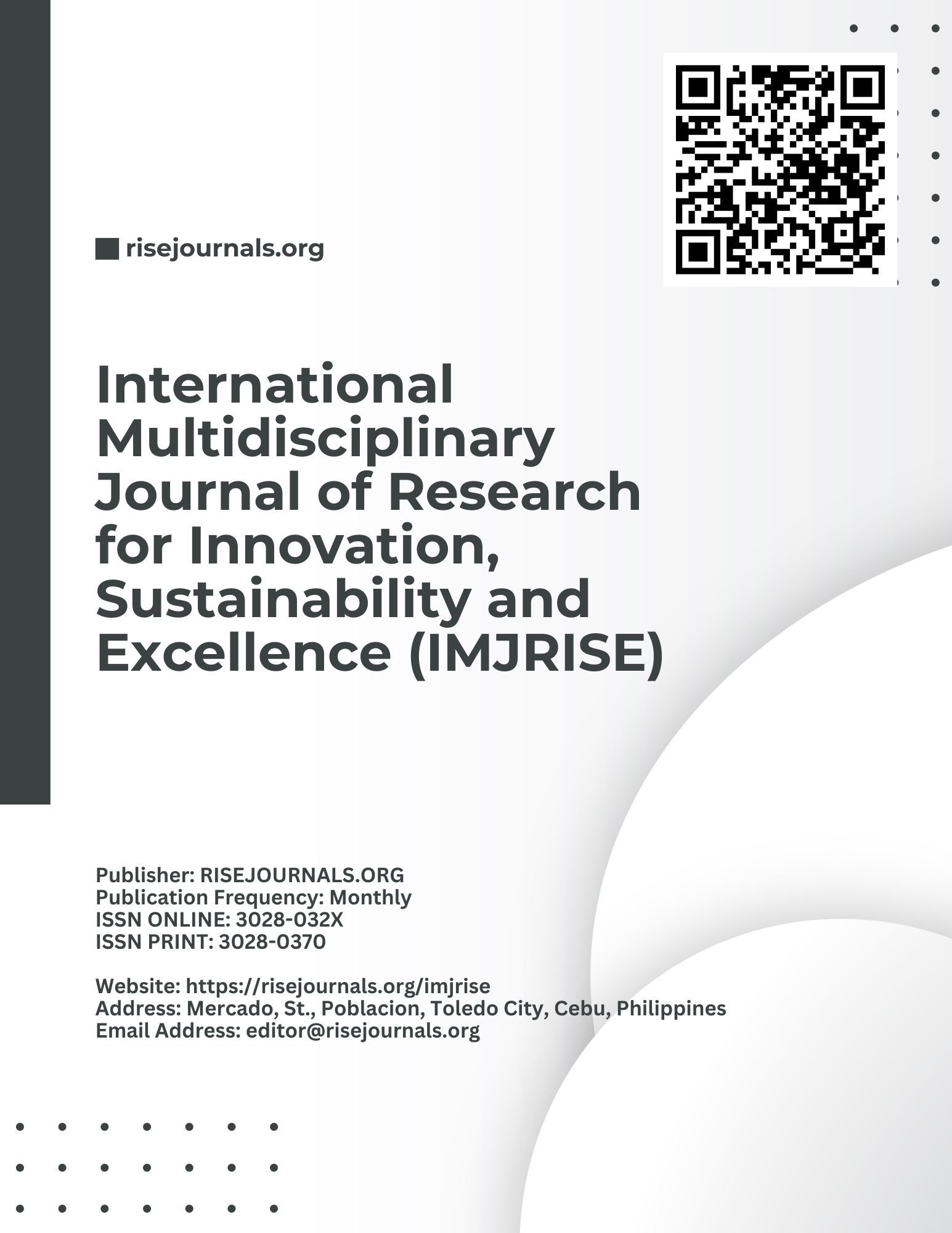Vocabulary Learning: Approaches Aligned with Common Core Standards
Keywords:
vocabulary instruction, Common Core State Standards, English Language ArtsAbstract
Findings reveal the critical role of vocabulary development in facilitating students' mastery of the standards, particularly in reading, writing, speaking, and listening domains. A diverse range of instructional approaches, including explicit instruction, context-based learning, morphemic analysis, and interactive read-alouds, are employed by educators to promote vocabulary acquisition and application across content areas. Emphasis is placed on active engagement and interaction, with strategies such as collaborative discussions and questioning techniques fostering meaningful student participation. However, gaps persist in the consistency and depth of vocabulary instruction, highlighting the need for comprehensive and systematic approaches aligned with the standards. Educators must prioritize the development of coherent vocabulary curricula, provide targeted support for diverse learners, and create language-rich environments conducive to vocabulary development. By adopting evidence-based practices, educators can empower students to become proficient users of language, thereby enhancing their academic success and lifelong learning.
References
Strategic Reading (CSR) in ESL Instruction: Effects on Reading Comprehension, Content Mastery, and Language Acquisition. Excellencia: International Multi-disciplinary Journal of Education (2994-9521), 1(5), 88-99.
Abrenilla, E. M., Redido, C., Abendan, C. F., & Kilag, O. K. (2023). The Next Chapter of ELT: Embracing AI-Infused Pedagogies and Evolving Educational Strategies in the Post-Pandemic Landscape. Excellencia: International Multi-disciplinary Journal of Education (2994-9521), 1(5), 124-135.
August, D., & Shanahan, T. (2017). Developing literacy in second-language learners: Report of the National Literacy Panel on Language-Minority Children and Youth. Routledge.
Baumann, J. F., Edwards, E. C., Boland, E. M., Olejnik, S., & Kame’enui, E. J. (2003). Vocabulary tricks: Effects of instruction in morphology and context on fifth-grade students’ ability to derive and infer word meanings. American educational research journal, 40(2), 447-494.
Baumann, J. F., Kame’enui, E. J., & Ash, G. E. (2003). Research on vocabulary instruction: Voltaire redux. Handbook of research on teaching the English language arts, 2(1), 752-785.
Beck, I. L., & McKeown, M. G. (2007). Increasing young low-income children’s oral vocabulary repertoires through rich and focused instruction. The Elementary School Journal, 107(3), 251-271.
Beck, I. L., McKeown, M. G., & Kucan, L. (2013). Bringing words to life: Robust vocabulary instruction. Guilford Press.
Biancarosa, G., & Snow, C. E. (2004). Reading next: A vision for action and research in middle and high school literacy: A report from Carnegie Corporation of New York. Alliance for Excellent Education.
Cain, K., & Oakhill, J. (2011). Matthew effects in young readers: Reading comprehension and reading experience aid vocabulary development. Journal of learning disabilities, 44(5), 431-443.
Canes, R. M., Cojuangco, F., & Kilag, O. K. (2023). The Enduring Significance of Chomsky's Language and Responsibility: Current Linguistic Perspectives. Excellencia: International Multi-disciplinary Journal of Education (2994-9521), 1(5), 536-546.
Carlisle, J. F. (2000). Awareness of the structure and meaning of morphologically complex words: Impact on reading. Reading and writing, 12, 169-190.
Common Core State Standards Initiative. (2010). Common Core State Standards for English language arts & literacy in history/social studies, science, and technical subjects. Washington, DC: National Governors Association Center for Best Practices and the Council of Chief State School Officers. https://learning.ccsso.org/wp-content/uploads/2022/11/ADA-Compliant-ELA-Standards.pdf
Fisher, D., Frey, N., & Lapp, D. (2008). Shared readings: Modeling comprehension, vocabulary, text structures, and text features for older readers. The Reading Teacher, 61(7), 548-556.
Fisher, D., Flood, J., Lapp, D., & Frey, N. (2004). Interactive read‐alouds: Is there a common set of implementation practices?. The Reading Teacher, 58(1), 8-17.
Gee, J. P. (2003). What video games have to teach us about learning and literacy. Computers in entertainment (CIE), 1(1), 20-20.
Gibbons, P. (2002). Scaffolding language, scaffolding learning. Portsmouth, NH: Heinemann.
Graves, M. F. (2016). The vocabulary book: Learning and instruction. Teachers College Press.
Hiebert, E. H., & Kamil, M. L. (2005). Teaching and learning vocabulary: Bringing research to practice. Routledge.
ISP, N., & Jonathan, N. (2009). Teaching ESL/EFL Listening and Speaking. New York and London: Routledge, 37.
Lumando, E., Uy, F., Kilag, O. K., & Abendan, C. F. (2023). Multisensory Structured Language Techniques: A Key to Bridging the Literacy Practice Gap in Intervention Strategies. Excellencia: International Multi-disciplinary Journal of Education (2994-9521), 1(5), 256-267.
Marzano, R. J. (1992). A different kind of classroom: Teaching with dimensions of learning. Association for Supervision and Curriculum Development, 1250 North Pitt Street, Alexandria, VA 22314 (ASCD stock no. 611-92107, $15.95, plus $2.50 handling)..
Marzano, R. J. (2007). The art and science of teaching: A comprehensive framework for effective instruction. Ascd.
Manire, E., Kilag, O. K., Cordova Jr, N., Tan, S. J., Poligrates, J., & Omaña, E. (2023). Artificial Intelligence and English Language Learning: A Systematic Review. Excellencia: International Multi-disciplinary Journal of Education (2994-9521), 1(5), 485-497.
McKeown, M. G., Beck, I. L., Omanson, R. C., & Perfetti, C. A. (1983). The effects of long-term vocabulary instruction on reading comprehension: A replication. Journal of Reading Behavior, 15(1), 3-18.
Nagy, W. E., & Anderson, R. C. (1984). How many words are there in printed school English?. Reading research quarterly, 304-330.
Nagy, W. E. (1988). Teaching vocabulary to improve reading comprehension. National Council of Teachers of English, 1111 Kenyon Rd., Urbana, IL 61801 (Stock No. 52384-015, $4.95 member, $7.50 nonmember--ISBN-0-8141-5238-4); International Reading Association, PO Box 8139, 800 Barksdale Rd., Newark, DE 19714-8139 (No. 151, $4.95 member, $7.50 nonmember--ISBN-0-87207-151-0)..
Pearson, P. D. (2013). Research foundations of the Common Core State Standards in English language arts. Quality reading instruction in the age of Common Core State Standards, 237-262.
Scott, J. A., & Nagy, W. E. (2004). Developing word consciousness. Vocabulary instruction: Research to practice, 201, 217.
Stahl, S. A., & Fairbanks, M. M. (1986). The effects of vocabulary instruction: A model-based meta-analysis. Review of educational research, 56(1), 72-110.


